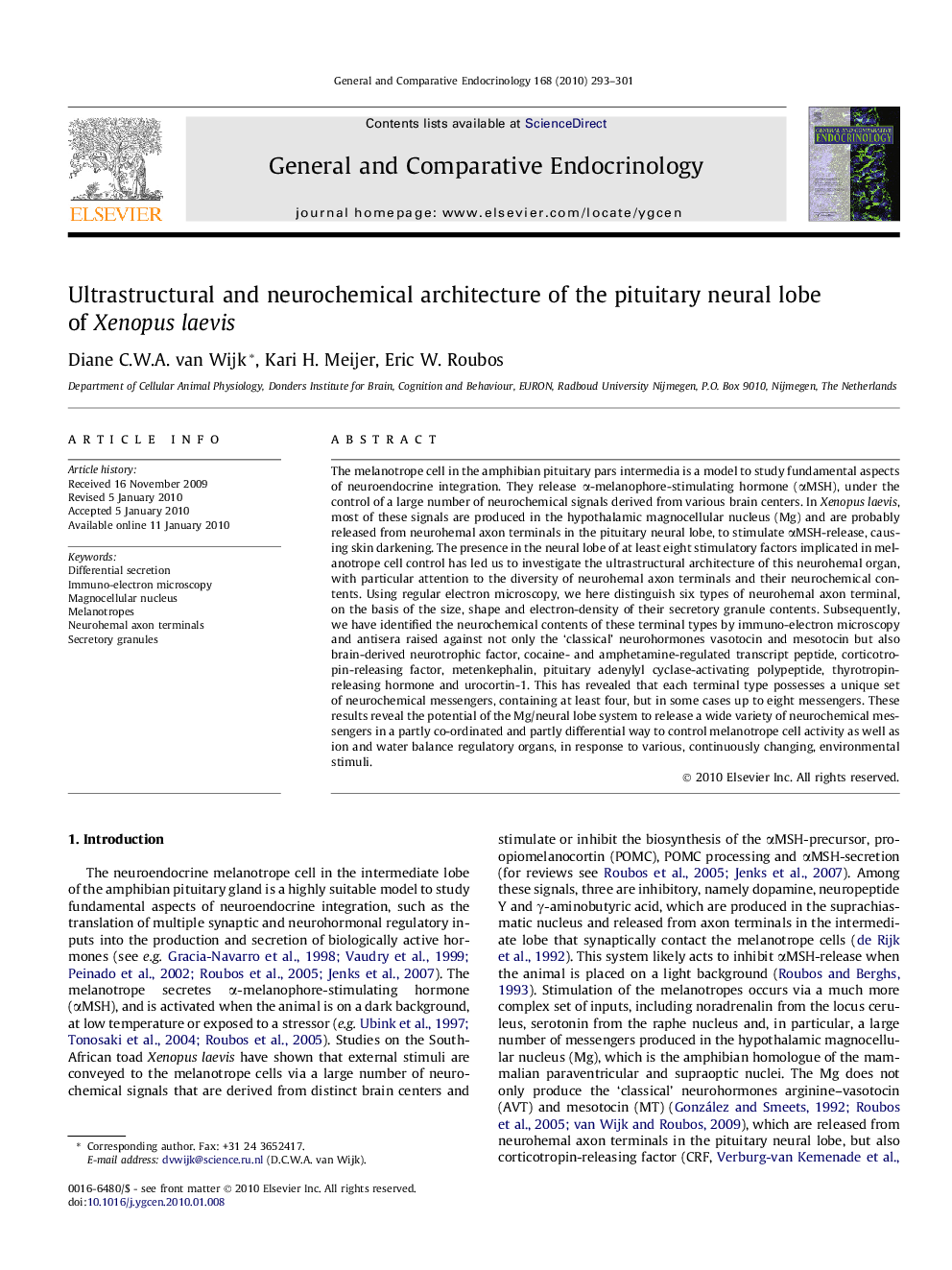| کد مقاله | کد نشریه | سال انتشار | مقاله انگلیسی | نسخه تمام متن |
|---|---|---|---|---|
| 2801172 | 1156145 | 2010 | 9 صفحه PDF | دانلود رایگان |
عنوان انگلیسی مقاله ISI
Ultrastructural and neurochemical architecture of the pituitary neural lobe of Xenopus laevis
دانلود مقاله + سفارش ترجمه
دانلود مقاله ISI انگلیسی
رایگان برای ایرانیان
کلمات کلیدی
موضوعات مرتبط
علوم زیستی و بیوفناوری
بیوشیمی، ژنتیک و زیست شناسی مولکولی
علوم غدد
پیش نمایش صفحه اول مقاله

چکیده انگلیسی
The melanotrope cell in the amphibian pituitary pars intermedia is a model to study fundamental aspects of neuroendocrine integration. They release α-melanophore-stimulating hormone (αMSH), under the control of a large number of neurochemical signals derived from various brain centers. In Xenopus laevis, most of these signals are produced in the hypothalamic magnocellular nucleus (Mg) and are probably released from neurohemal axon terminals in the pituitary neural lobe, to stimulate αMSH-release, causing skin darkening. The presence in the neural lobe of at least eight stimulatory factors implicated in melanotrope cell control has led us to investigate the ultrastructural architecture of this neurohemal organ, with particular attention to the diversity of neurohemal axon terminals and their neurochemical contents. Using regular electron microscopy, we here distinguish six types of neurohemal axon terminal, on the basis of the size, shape and electron-density of their secretory granule contents. Subsequently, we have identified the neurochemical contents of these terminal types by immuno-electron microscopy and antisera raised against not only the 'classical' neurohormones vasotocin and mesotocin but also brain-derived neurotrophic factor, cocaine- and amphetamine-regulated transcript peptide, corticotropin-releasing factor, metenkephalin, pituitary adenylyl cyclase-activating polypeptide, thyrotropin-releasing hormone and urocortin-1. This has revealed that each terminal type possesses a unique set of neurochemical messengers, containing at least four, but in some cases up to eight messengers. These results reveal the potential of the Mg/neural lobe system to release a wide variety of neurochemical messengers in a partly co-ordinated and partly differential way to control melanotrope cell activity as well as ion and water balance regulatory organs, in response to various, continuously changing, environmental stimuli.
ناشر
Database: Elsevier - ScienceDirect (ساینس دایرکت)
Journal: General and Comparative Endocrinology - Volume 168, Issue 2, 1 September 2010, Pages 293-301
Journal: General and Comparative Endocrinology - Volume 168, Issue 2, 1 September 2010, Pages 293-301
نویسندگان
Diane C.W.A. van Wijk, Kari H. Meijer, Eric W. Roubos,